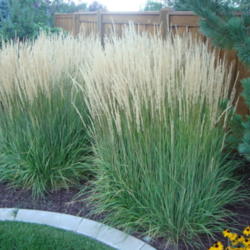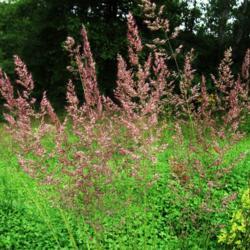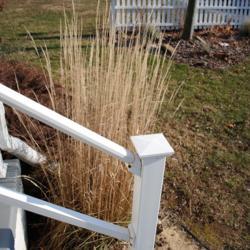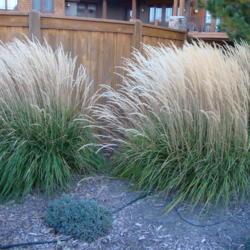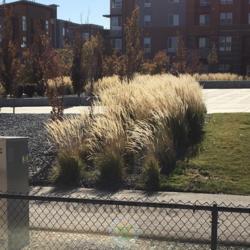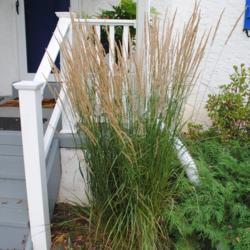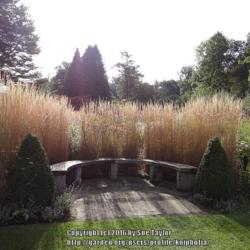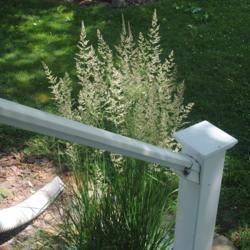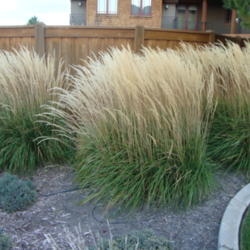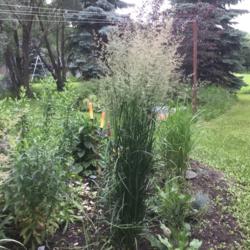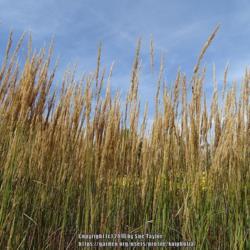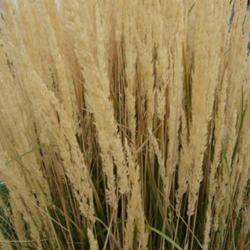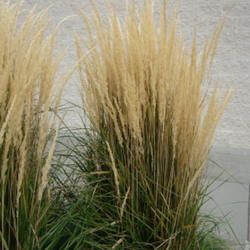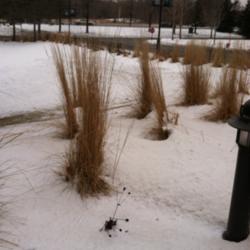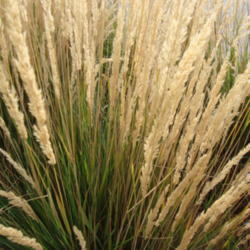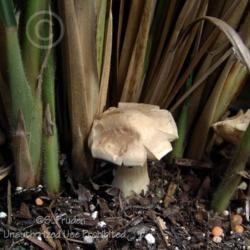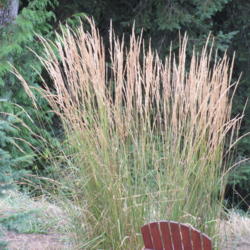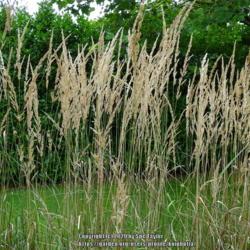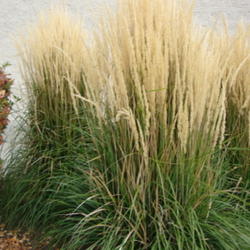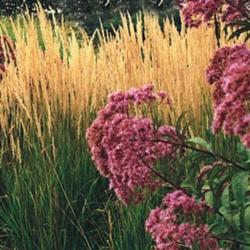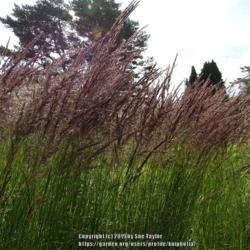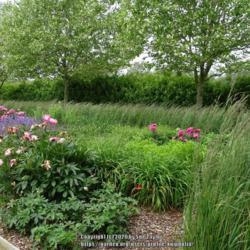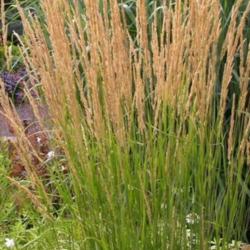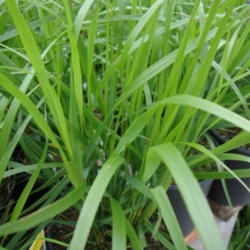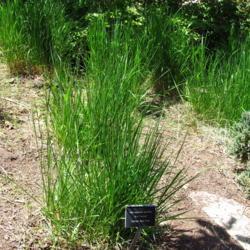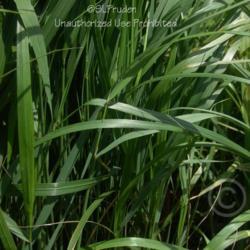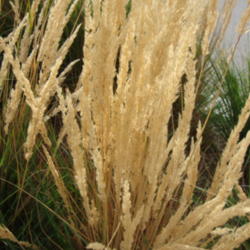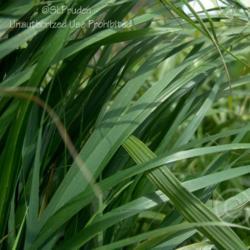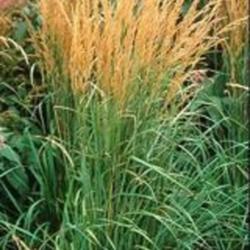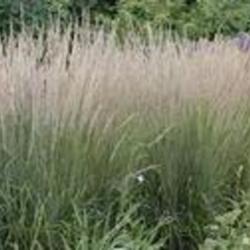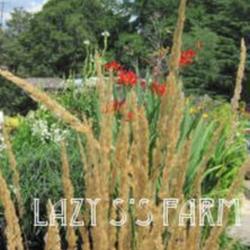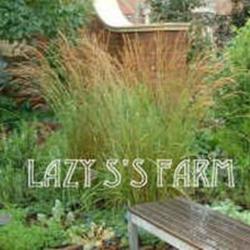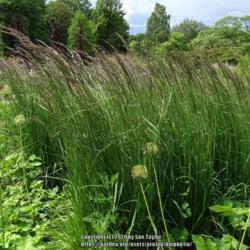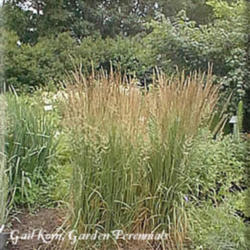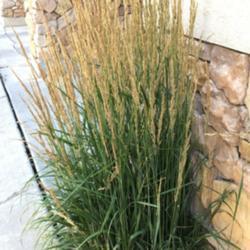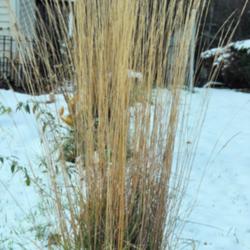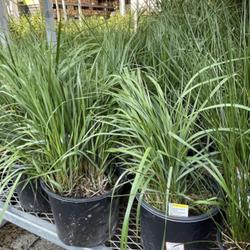Posted by
Trish (Grapevine, TX - Zone 8a) on Apr 20, 2022 9:35 AM concerning plant:
Leaf blades are 2 to 3 feet long and a deep, shiny green. Loose, feathery flowers atop 5-foot stems appear in June and are initially light pink in color. As the seed heads mature, they become very narrow and turn a golden tan color that lasts through the fall. One of the distinguishing and highly regarded features of 'Karl Foerster' compared to other varieties is its narrow and upright growth. At only 18 inches wide and up to 5 feet tall, a grouping creates a dramatic vertical element in gardens.
The plant is fully deciduous in cold winter areas, but semi-evergreen in mild winter climates. Leaves emerge early in spring and last until early winter.
Unlike many common ornamental plants from other continents, the seeds of 'Karl Foerster' are sterile. After nearly 40 years in American gardens, it has never become an invasive pest.
Where and how to grow
'Karl Foerster' grows well in most North American gardens. Hardy throughout USDA Zones 4 through 9. 'Karl Foerster' is a cool-season grass meaning it grows best at temperatures near 70oF, and the best time to plant is spring in the North; fall in the South and West. The plant does suffer in the heat and humidity of an eastern zone 9 summer.
Plant in full sun to partial shade, in well-drained soils. Moist soil and regular rain or irrigation are preferable, but the plant will tolerate heavier clay soils and drier sites.
To grow to their maximum 5-foot height, fertilizer is required. Use about 1 pound of a 10-10-10 fertilizer per 100 square feet. Low fertility is not a problem, but will result in shorter plants.
'Karl Foerster' is usually free of serious disease or insect problems although a foliar rust disease may appear in particularly wet summers and in situations with poor air circulation. Browsing deer don't bother it. Little maintenance is required except to cut back the stems to about 6 inches in late winter or early spring. In areas with mild winters the foliage may remain evergreen.
Garden Uses
Some call the plant "metamorphic" for all the different stages it passes through in a season. Others have referred to it as the "perpetual motion grass" for its ability to catch and give motion to the slightest breeze.
Use 'Karl Foerster' as an individual specimen or small clump to provide a strong vertical accent, or mass a row to create a very fast growing, 5-foot high screen. It also serves well in containers and will survive most winters unprotected as far north as zone 6.
Naturally floral designers love 'Karl Foerster' for its use in fresh or dried arrangements. Stems cut before the flowers mature will last for months in an arrangement while maintaining the golden tan color. In heavy rain or wind the stems will dip and droop in all directions but return to vertical as soon as the storm passes.
Posted by
Bonehead (Planet Earth - Zone 8b) on Dec 12, 2015 1:15 PM concerning plant:
Very nice focal grass, tall and graceful, great wind action. It is also quite forgiving - the early grass stalks look very similar to my common clumping orchard grass and I diligently pulled them all out one spring. By the time I got to my final clump, I realized my mistake and left that one alone. Mid-summer, I really couldn't tell any difference between the clumps I had massacred and the one I left alone. I have not yet tried to divide this, but plan to this spring when it breaks dormancy.
Posted by
ILPARW (southeast Pennsylvania - Zone 6b) on Feb 20, 2019 11:59 AM concerning plant:
This European species is a very reliable and easy grass perennial to grow. It is a cool season grass that begins growth early in spring. It has a very erect, neat habit and is soft to touch. Its green flower clusters that are loose and open bloom in June into early July, and then the inflorescences tighten in July and develop into pinkish-tan grass seed-head spikes the rest of the growing season, until turning just tan in fall, then becoming very thin and wispy in winter. It is very easy to dig up and divide for propagation. I can't think of this grass species really having the center of the clump die out as many clump grass species do after 5 to 15 years. My plant at the front door porch area has not needed division for 16 years. It looks good all winter long, then I cut it down in before growth in March. My specimen is now in part shade because the trees have grown much larger, but when the sun hits the plant it really looks scenic. (What can be good about plants in part-shade is that they don't get so huge and thick as in full sun.) "My plant is the cultivar of 'Karl Foerster' that bears more pinkish grass flowers than the mother species and is the most common cultivar that is sold at most conventional nurseries, and is common in gardens and used a fair amount by landscape designers.
Posted by
SongofJoy (Clarksville, TN - Zone 6b) on Jan 14, 2012 11:55 AM concerning plant:
The Perennial Plant Association's pick of the year for 2001, 'Karl Foerster', is a very upright clump forming grass that is easy to grow in full sun and average soil. Growing 4 to 5 feet tall, it is a cool season grass so it greens up in early spring and by mid-summer has whitish flower heads that mature to warm gold later on. 'Karl Foerster' will bend and sway in wind and rain but will always become upright again.

